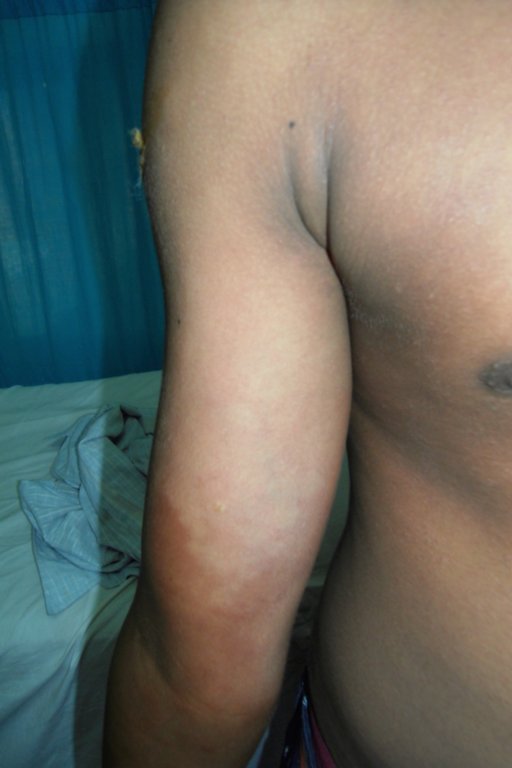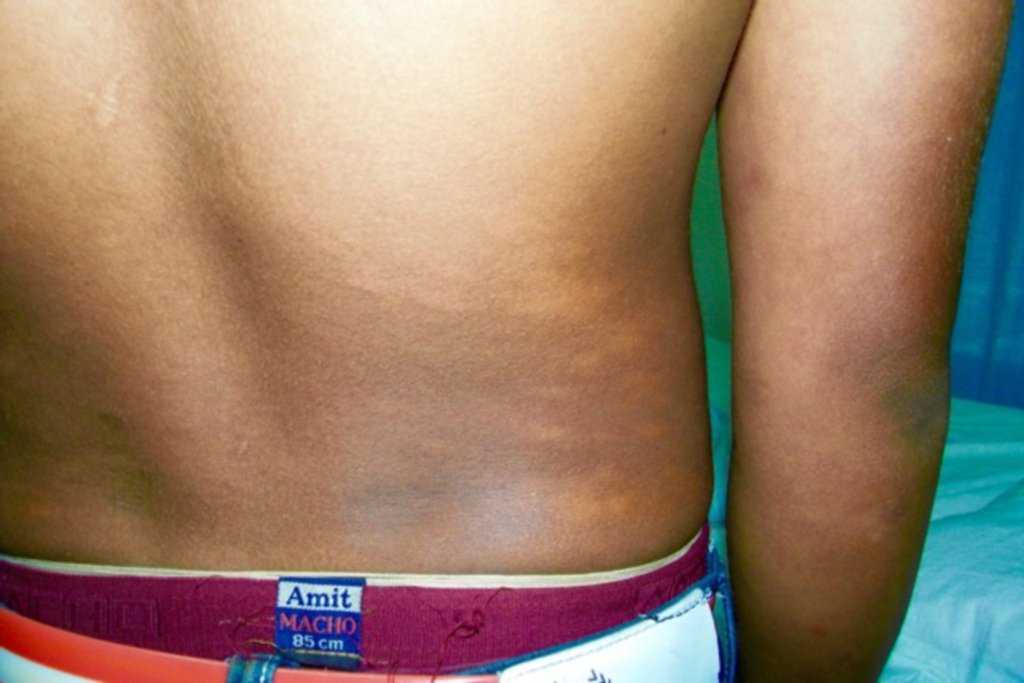|
Patient of Dr E Wee
Hx:
A 16-year-old Nepalese student from the Leprosy endemic Terai region of Nepal presented to the outpatient department at Lalgadh Hospital. He described the development of persistent but non-itchy, non-tender hypopigmented skin patches over the past year. The patient was otherwise well and concern about the cosmetic appearance of these lesions had led him to seek medical advice. Importantly, the patient had no significant past medical history or close contact with any leprosy affected individuals.
O/E:
Interestingly, preliminary examination findings were more suggestive of Tinea versicolor than leprosy. On inspection, the lesions were well-circumscribed, small circular hypopigmented macules in a symmetrical distribution on the upper chest, lower back and shoulders, closely resembling Tinea versicolor. Furthermore, initial neurological examination was unremarkable and revealed no peripheral nerve enlargement or weakness typical of leprosy. Significantly, the hypopigmented macules on his trunk were not anaesthetic.
Nevertheless, careful examination revealed a single small lesion on the right upper arm that was both hypopigmented and anaesthetic, prompting further investigation for leprosy.
Ix:
Investigations confirmed that the patient had multibacillary leprosy, with slit-skin smears from several lesions demonstrating large numbers of acid fast bacilli.
Mx:
The patient was commenced on a 12/12 course of MDT including rifampicin, clofazamine and dapsone in accordance with WHO treatment recommendations.
|



